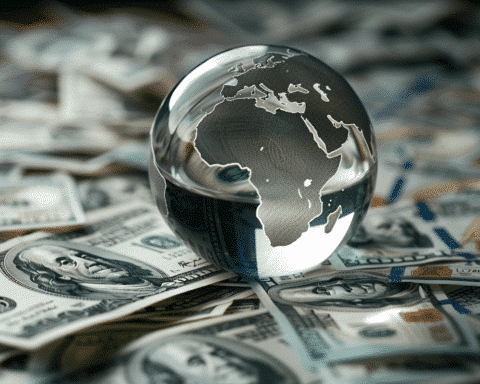China’s economy, the world’s second-largest, is slowing down more quickly than anticipated, raising concerns not only for its domestic future but also for the broader global market. Analysts now predict that China will miss its 5% growth target for the year, as various economic indicators point to continued stagnation. Industrial production and retail sales have slowed, while the country’s stock markets and real estate sector have suffered significant declines.
Unemployment is becoming a major issue, particularly for younger generations. The youth unemployment rate in urban areas reached 17% in July, contributing to a broader sense of uncertainty in the job market. Official statistics also show that urban unemployment climbed to 5.3% last month, the highest in six months. This has led many Chinese households to save rather than spend, exacerbating the country’s economic slowdown. Deflation remains an ongoing concern, further complicating efforts to stabilize the economy.
Property Market Woes
One of the most significant factors dragging down the Chinese economy is the meltdown in the property sector. Once responsible for nearly one-quarter of China’s economic activity, the real estate market has been in turmoil since 2020 when the government imposed limits on developers’ ability to borrow money. Since then, several major developers have defaulted, triggering a ripple effect throughout the economy. Real estate investment has fallen by more than 10% this year compared to the same period in 2023.
Falling real estate prices have not only drained household savings but have also limited local governments’ ability to raise funds through land sales. This double impact on both local government and family finances has put tremendous pressure on China’s overall growth.
Slumping Markets and Demographic Challenges
The fallout from the economic slowdown is clearly visible in China’s stock markets. A key index for Chinese stocks has dropped by about 14% since reaching a high in May. Despite brief periods of optimism following China’s reopening after its strict “zero covid” policies, investor sentiment remains low. Both domestic and foreign investors have been reluctant to inject capital into the Chinese market due to a lack of a clear economic recovery narrative.
Adding to China’s economic woes are demographic shifts, including an aging population and a declining birth rate. To address a shrinking workforce, the Chinese government recently raised the retirement age by three years for men and five years for women in blue-collar jobs. However, this move may not be enough to mitigate the long-term effects of the country’s labor shortages.
Private Sector Struggles
Over the last decade, China’s private sector has also been affected by increasing government intervention. Since taking office in 2013, President Xi Jinping has expanded an anti-corruption drive, initially targeting government officials but later extending it to high-profile figures in the business world.
This shift has caused a downturn in the tech sector and other private industries, leading to decreased optimism about China’s business environment. U.S. companies operating in China reported record-low profits in 2023, and many businesses are relocating their investments to Southeast Asia and India.
Limited Government Intervention
Despite growing economic challenges, the Chinese government has been reluctant to introduce large-scale stimulus measures, like those used during the 2008 global financial crisis. Economists have suggested that direct payments to struggling families or bolstering social welfare systems could help boost consumer demand, but the government has resisted these ideas, favoring investment in manufacturing instead.
In March, China’s Premier Li Qiang unveiled a government investment of over $1 billion to boost semiconductor and core technology manufacturing. The strategy has already shown results, with manufacturing investment rising by 9% this year and global exports increasing by over 8% in August, compared to the same period in 2023.
Global Trade Tensions
As China’s domestic demand weakens, the country has increasingly relied on exporting goods, which has further strained its trade relationships. The United States and the European Union have expressed concerns that China’s use of state subsidies is distorting global trade, particularly in industries like electric vehicles, solar panels, and steel. In response, the U.S. has imposed new tariffs on Chinese goods, including a 100% tariff on electric vehicles and a 50% tariff on solar panels, set to take effect at the end of September.
With China’s slowdown likely to increase its export efforts, tensions between China and other major economies are expected to rise, adding to the uncertainty surrounding the global economic outlook.




